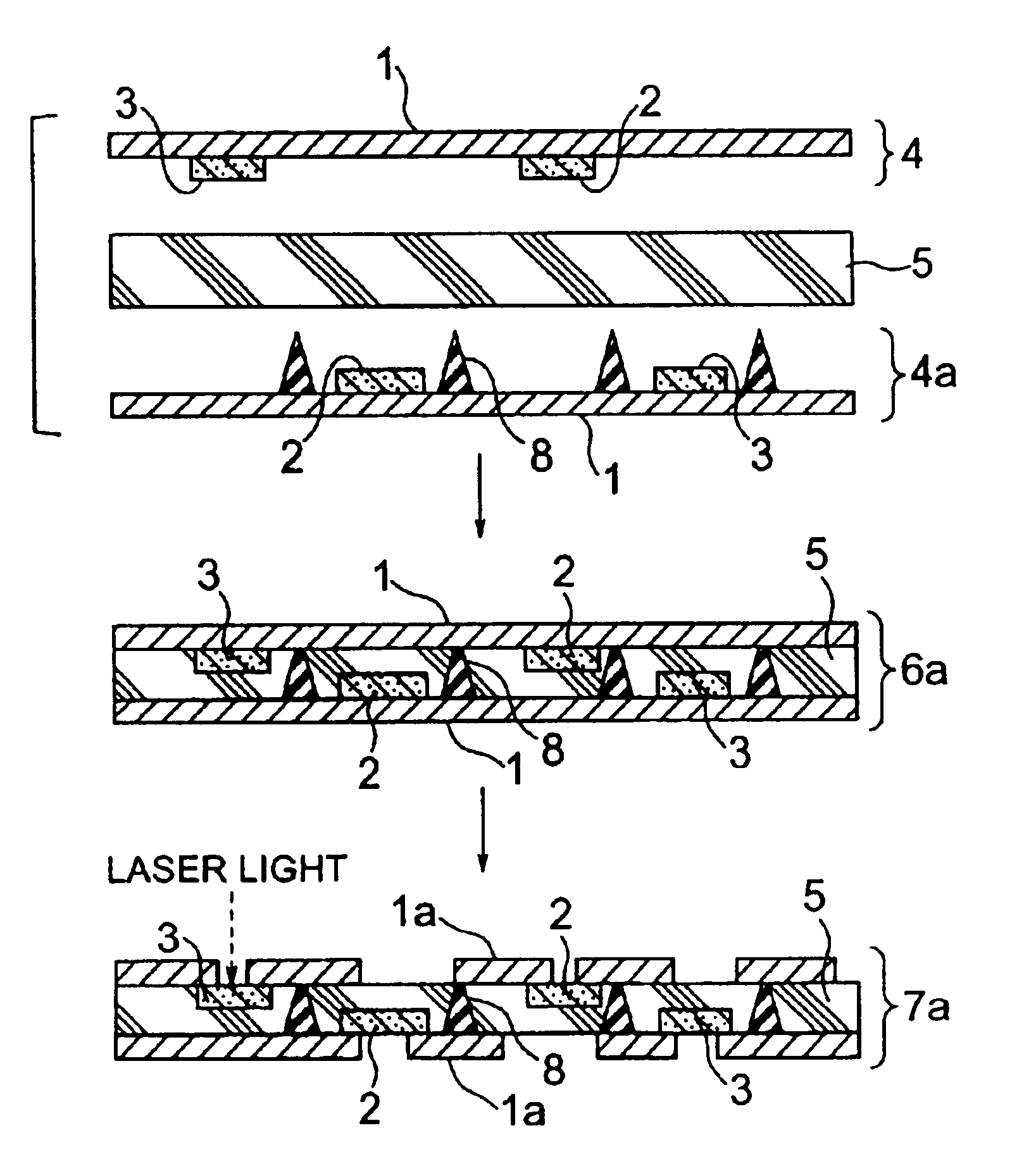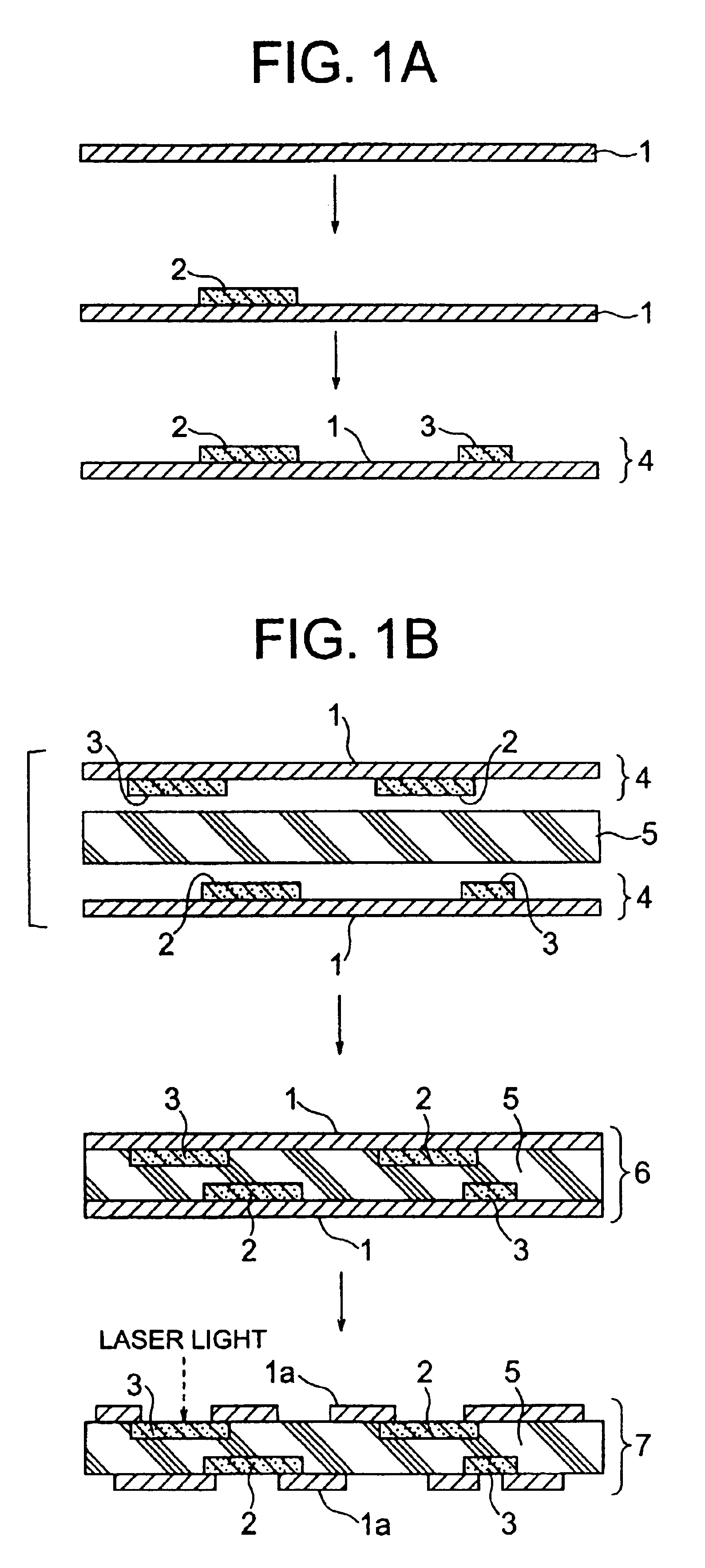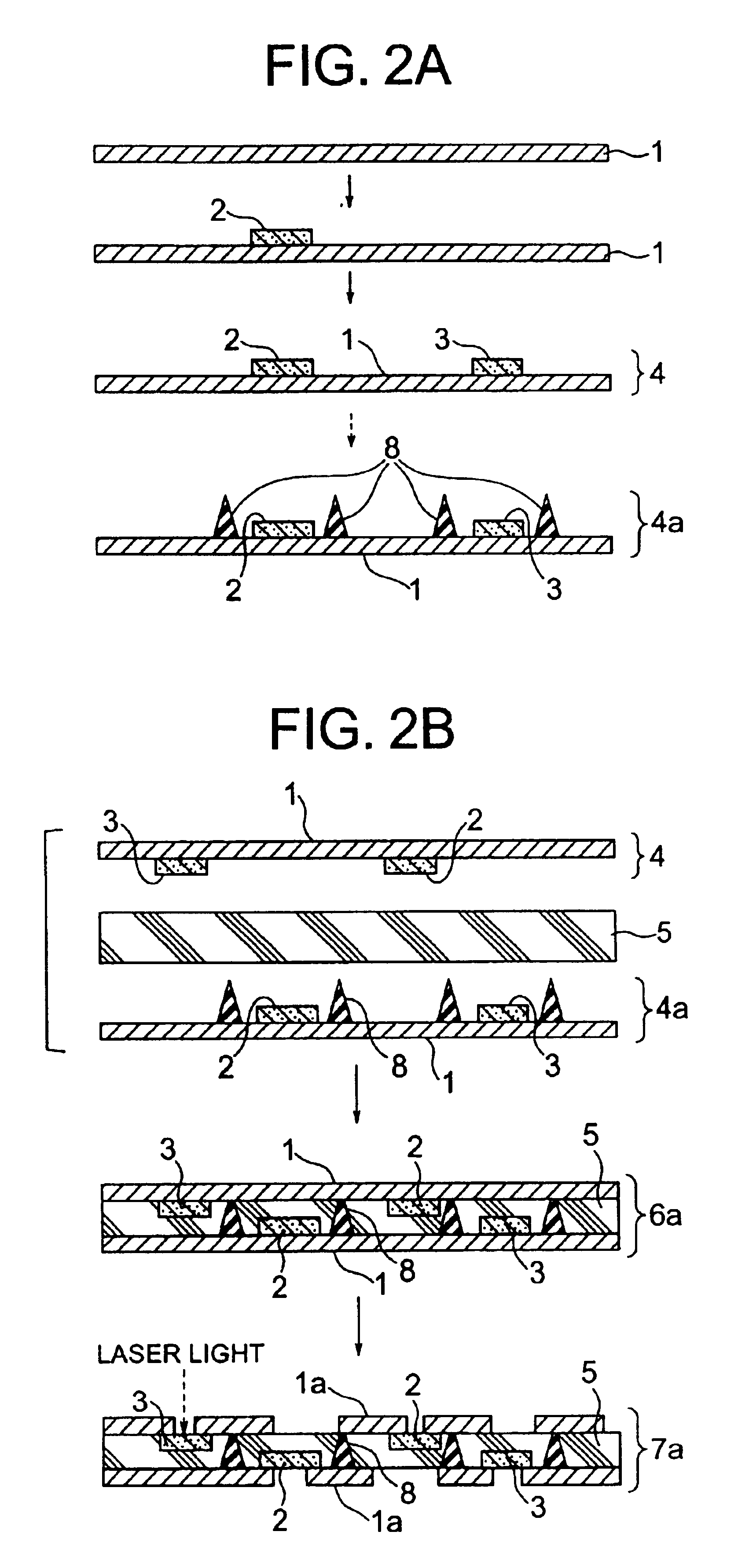Wiring board provided with passive element and cone shaped bumps
a technology of passive elements and wiring boards, which is applied in the direction of printed element electric connection formation, magnets, magnetic bodies, etc., can solve the problems of low design allowance when the passive elements are arranged, inability to obtain a smaller size, and warpage of multi-layered substrates, etc., and achieve excellent characteristics.
- Summary
- Abstract
- Description
- Claims
- Application Information
AI Technical Summary
Benefits of technology
Problems solved by technology
Method used
Image
Examples
Embodiment Construction
The fabricating method according to the present invention, as an implementation mode, further includes forming a substantially conical conductive bump on the first surface of the first metal foil. In this case, the forming a double-sided wiring board is performed so that the formed conductive bump may penetrate through the insulating board and establish an electrical contact with the second metal foil. That is, since wiring layers on both sides are electrically connected by means of a conductive bump, the number of the processes may be reduced and a double-sided wiring board whose wiring layers on both sides have an electrical continuity may be easily fabricated.
Furthermore, in an implementation mode of the fabricating method according to the present invention, the patterning the first metal foil and / or the second metal foil includes the formation of an inductor that is vortically formed due to a pattern and / or a loop antenna that is formed loop-like due to a pattern. That is, an in...
PUM
| Property | Measurement | Unit |
|---|---|---|
| Thickness | aaaaa | aaaaa |
Abstract
Description
Claims
Application Information
 Login to View More
Login to View More - R&D
- Intellectual Property
- Life Sciences
- Materials
- Tech Scout
- Unparalleled Data Quality
- Higher Quality Content
- 60% Fewer Hallucinations
Browse by: Latest US Patents, China's latest patents, Technical Efficacy Thesaurus, Application Domain, Technology Topic, Popular Technical Reports.
© 2025 PatSnap. All rights reserved.Legal|Privacy policy|Modern Slavery Act Transparency Statement|Sitemap|About US| Contact US: help@patsnap.com



